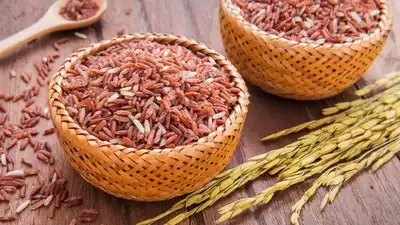Red rice, often overlooked in favor of more popular grains like white and brown rice, is a nutrient-dense superfood that has been a staple in many cultures for centuries. This whole grain variety not only adds a unique color and flavor to dishes but also packs a punch when it comes to health benefits. In this blog, we will explore the nutritional profile of red rice, its health benefits, and how to incorporate it into your diet for a healthier lifestyle. Men with ED issues ought to accept Cenforce 150 mg and Cenforce 200 mg.
What is Red Rice?
Red rice is a whole grain rice variety that gets its distinct reddish-brown hue from its outer bran layer, which is rich in antioxidants and nutrients. Unlike white rice, which has been stripped of its bran and germ, red rice retains these layers, making it a more nutritious option. There are various types of red rice, including Bhutanese red rice, Thai red rice, and Indian red rice, each with its unique flavor and texture.
Nutritional Profile
Red rice is packed with essential nutrients, making it an excellent addition to a balanced diet. Here are some key components:
- Rich in Fiber: Red rice is an excellent source of dietary fiber, promoting digestive health and aiding in weight management.
- Vitamins and Minerals: It contains important vitamins such as B vitamins (thiamine, niacin, and riboflavin) and minerals like iron, magnesium, and zinc.
- Antioxidants: The reddish hue indicates a high concentration of anthocyanins, powerful antioxidants that combat oxidative stress and inflammation.
- Low Glycemic Index: Red rice has a lower glycemic index compared to white rice, making it a better option for maintaining stable blood sugar levels.
Health Benefits of Red Rice
1. Supports Heart Health
Red rice is beneficial for heart health due to its high fiber content and presence of antioxidants. Studies have shown that consuming whole grains can lower cholesterol levels and reduce the risk of heart disease. The anthocyanins found in red rice help to improve blood circulation and reduce inflammation, further contributing to cardiovascular health.
2. Aids in Digestion
The dietary fiber in red rice promotes healthy digestion by adding bulk to the stool and preventing constipation. It helps maintain regular bowel movements and supports a healthy gut microbiome, which is crucial for overall digestive health.
3. Regulates Blood Sugar Levels
With its low glycemic index, red rice is an excellent choice for individuals with diabetes or those looking to manage their blood sugar levels. The slower digestion of red rice helps prevent spikes in blood sugar, making it a more stable carbohydrate source compared to refined grains.
4. Promotes Weight Management
Red rice can aid in weight management due to its high fiber content, which promotes feelings of fullness and reduces overall calorie intake. Including red rice in your meals can help control hunger and cravings, making it easier to stick to a healthy diet.
5. Boosts Immune Function
The vitamins and minerals found in red rice, such as iron and zinc, play essential roles in supporting a healthy immune system. Antioxidants, particularly anthocyanins, help fight off oxidative stress, which can weaken immune function.
6. Enhances Skin Health
The antioxidants in red rice, particularly anthocyanins, can promote healthy skin by combating free radicals and reducing inflammation. Regular consumption may contribute to a clearer complexion and help protect the skin from damage caused by environmental factors.
7. Improves Energy Levels
Red rice is a great source of complex carbohydrates, providing a steady release of energy. Unlike simple carbohydrates that can cause rapid spikes and crashes in energy levels, red rice helps sustain energy throughout the day, making it ideal for those with active lifestyles.
How to Incorporate Red Rice into Your Diet
Incorporating red rice into your meals is simple and versatile. Here are some ideas:
- Salads: Use cooked red rice as a base for salads, combining it with fresh vegetables, legumes, and a light dressing for a nutritious meal.
- Stir-Fries: Add red rice to stir-fries for a colorful and hearty dish. Pair it with lean proteins like chicken or tofu and an array of vegetables.
- Soups and Stews: Incorporate red rice into soups and stews for added texture and nutrition. It absorbs flavors well and adds a satisfying element to your dishes.
- Grain Bowls: Create grain bowls by layering red rice with roasted vegetables, protein, and a drizzle of your favorite sauce or dressing.
- Side Dish: Serve red rice as a side dish, much like you would with quinoa or brown rice. It pairs well with grilled meats, fish, and vegetable dishes.
Conclusion
Red rice is a nutritional powerhouse that offers a wide range of health benefits, making it an excellent addition to a balanced diet. From promoting heart health to aiding digestion and regulating blood sugar levels, this whole grain is a versatile and delicious option for anyone looking to improve their overall well-being. By incorporating red rice into your meals, you can enjoy its unique flavor while reaping the numerous health benefits it has to offer. So, consider making the switch to red rice for a healthier, more vibrant life!
